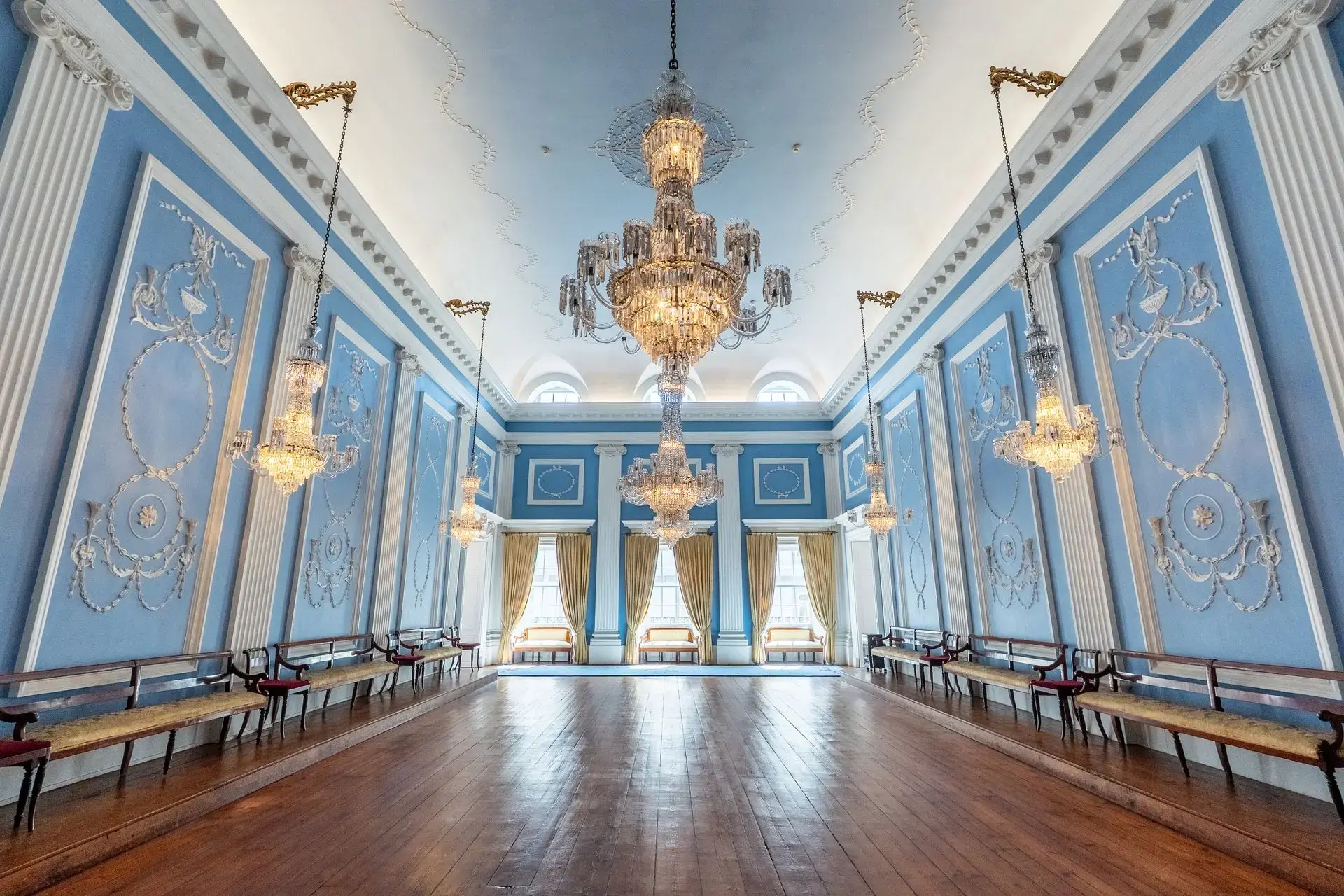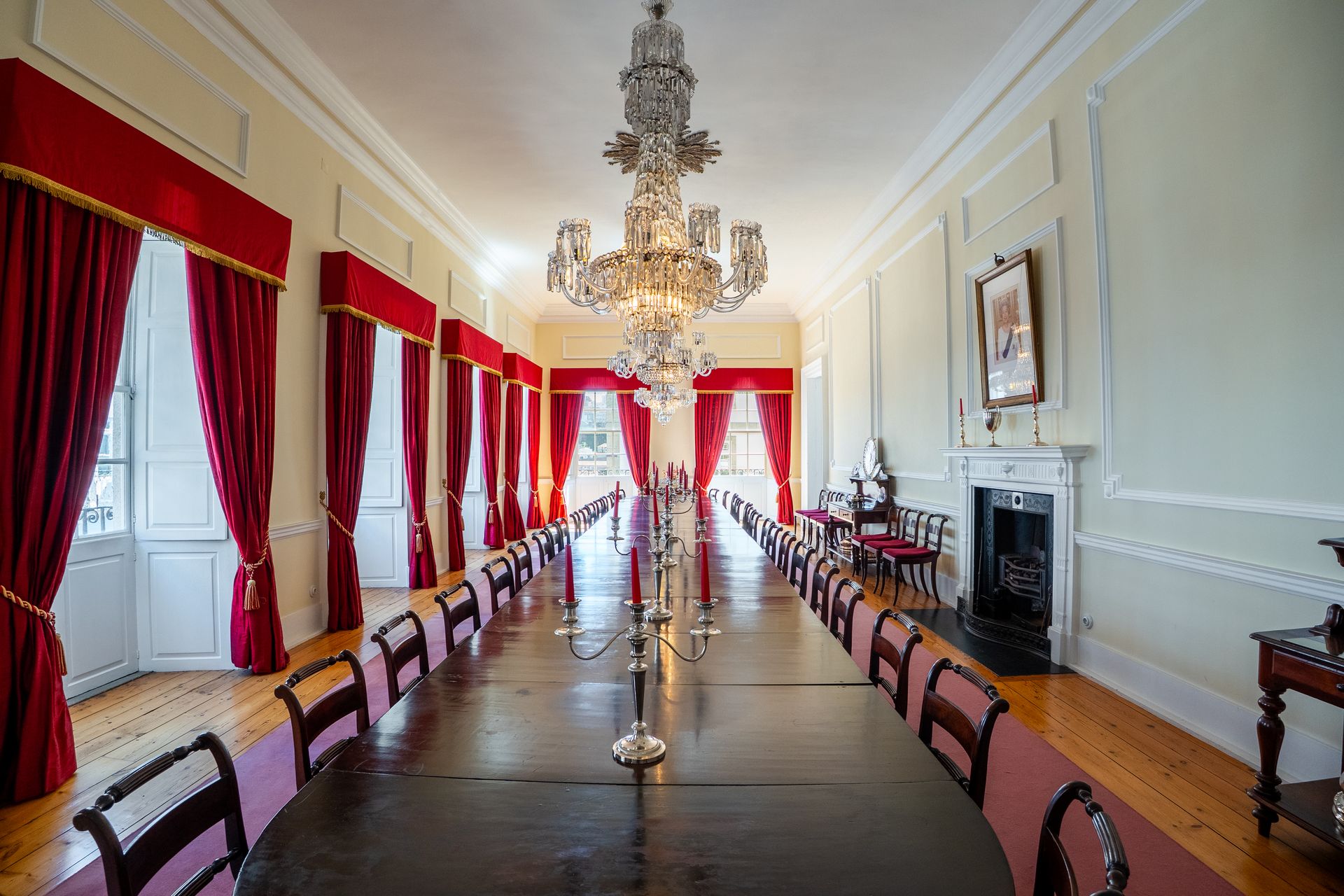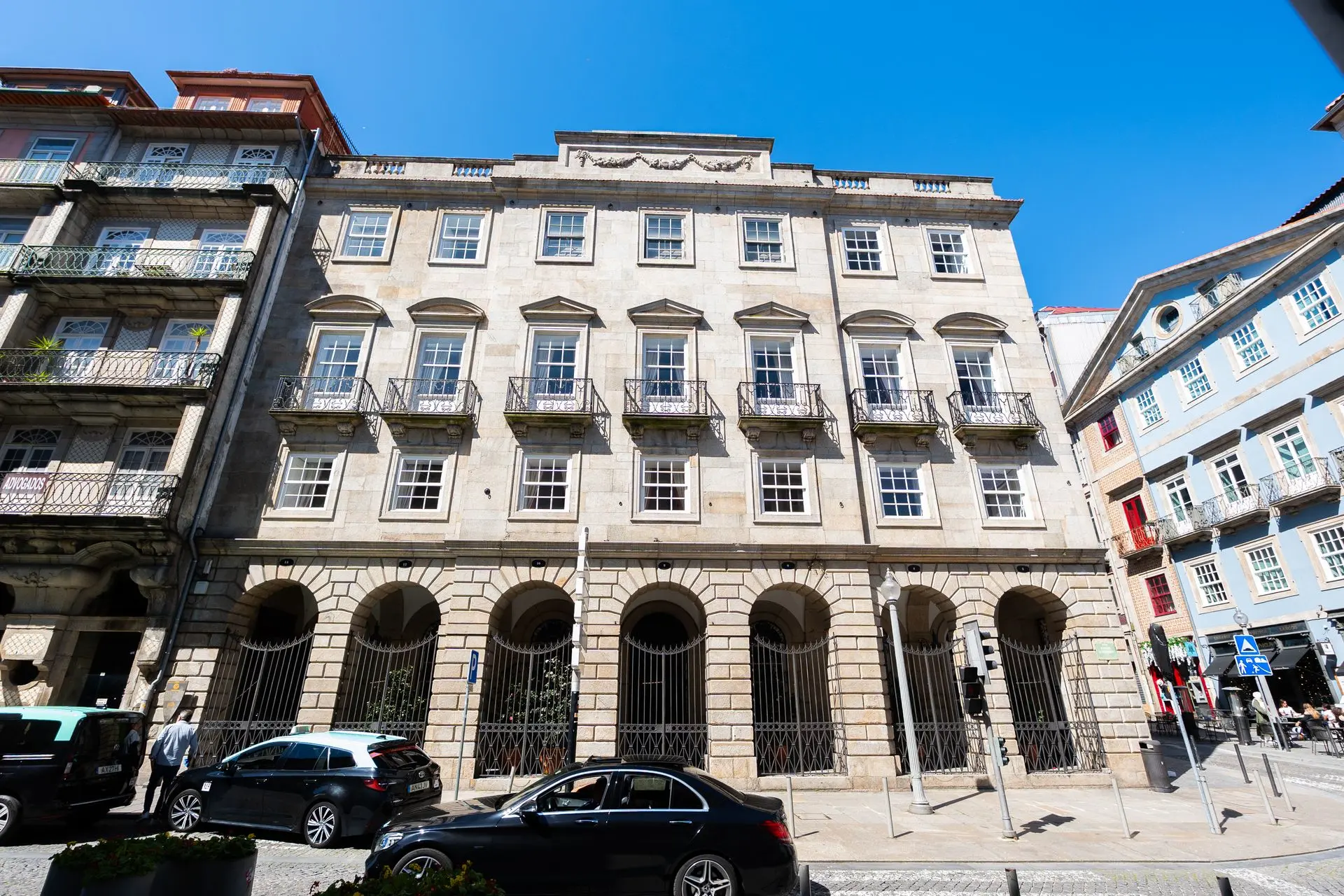
The design and construction of the Factory House was entrusted to John Whitehead (1726-1802), the British consul in Oporto and a gifted architect. He designed an imposing building in the Neopalladian style, built between 1786 and 1790.
The British Factory House is the last of its kind anywhere in the world.

The British Factory House is the last of its kind anywhere in the world.
The word ‘factory’ refers to an organization of merchants from a particular nation trading in a foreign country. Factories also served as places where merchants could meet and enjoy moments of leisure. The Oporto Factory House was conceived as a place of elegant and civilized entertainment. It was also meant as a remarkable and dignified symbol of the Port Wine trade, which is reflected in the monumental scale of the building and in its lavish interiors. Its generously proportioned rooms also echo the contemporary taste for grand balls and refined social gatherings.
By 1809, Napoleon’s forces had captured the city of Oporto. During the occupation, the Factory House was taken over by the French army. The Members only regained possession of the house in 1811. However, in the meantime, Britain had agreed to abolish its factories in Portugal, and the Oporto factory was wound up.


Apart from its social role, the Factory House’s main purpose today is to inspire the appreciation of Port, particularly of Vintage Port, one of the world's great classic wines.
The Factory House is unique in many ways. It is a building that symbolises the historic British presence in the Port Trade and preserves its customs, traditions and heritage. At the same time, it is a living, active institution that celebrates Port and promotes its enjoyment in a civilised and graceful setting to the many guests who visit the House each year from around the globe.
In 1812, a new society was established. Initially known as the British Club, it changed the name in 1814 to British Association. Although this association now owns and occupies the building, it remains known as the Factory House.
Since 1811 the Members of the association and owners of the Factory House are British Port Houses who have always funded the property.
The purpose of the Factory House has always been essentially social and today there is an unspoken rule that no business should be conducted within its walls. The rooms are used regularly for receptions, dinners and celebrations. Every Wednesday, representatives meet for lunch and a glass of Vintage Port in the company of guests from the local and international community.
The word ‘factory’ refers to an organization of merchants from a particular nation trading in a foreign country. Factories also served as places where merchants could meet and enjoy moments of leisure. The Oporto Factory House was conceived as a place of elegant and civilized entertainment. It was also meant as a remarkable and dignified symbol of the Port Wine trade, which is reflected in the monumental scale of the building and in its lavish interiors. Its generously proportioned rooms also echo the contemporary taste for grand balls and refined social gatherings.
The design and construction of the Factory House was entrusted to John Whitehead (1726-1802), the British consul in Oporto and a gifted architect. He designed an imposing building in the Neopalladian style, built between 1786 and 1790.
By 1809, Napoleon’s forces had captured the city of Oporto. During the occupation, the Factory House was taken over by the French army. The Members only regained possession of the house in 1811. However, in the meantime, Britain had agreed to abolish its factories in Portugal, and the Oporto factory was wound up.


Apart from its social role, the Factory House’s main purpose today is to inspire the appreciation of Port, particularly of Vintage Port, one of the world's great classic wines.
The Factory House is unique in many ways. It is a building that symbolizes the historic British presence in the Port Trade and preserves its customs, traditions and heritage. At the same time, it is a living, active institution that celebrates Port and promotes its enjoyment in a civilized and graceful setting to the many guests who visit the House each year from around the globe.
In 1812, a new society was established. Initially known as the British Club, it changed the name in 1814 to British Association. Although this association now owns and occupies the building, it remains known as the Factory House.
Since 1811 the Members of the association and owners of the Factory House are British Port Houses who have always funded the property.
The purpose of the Factory House has always been essentially social and today there is an unspoken rule that no business should be conducted within its walls. The rooms are used regularly for receptions, dinners and celebrations. Every Wednesday, representatives meet for lunch and a glass of Vintage Port in the company of guests from the local and international community.